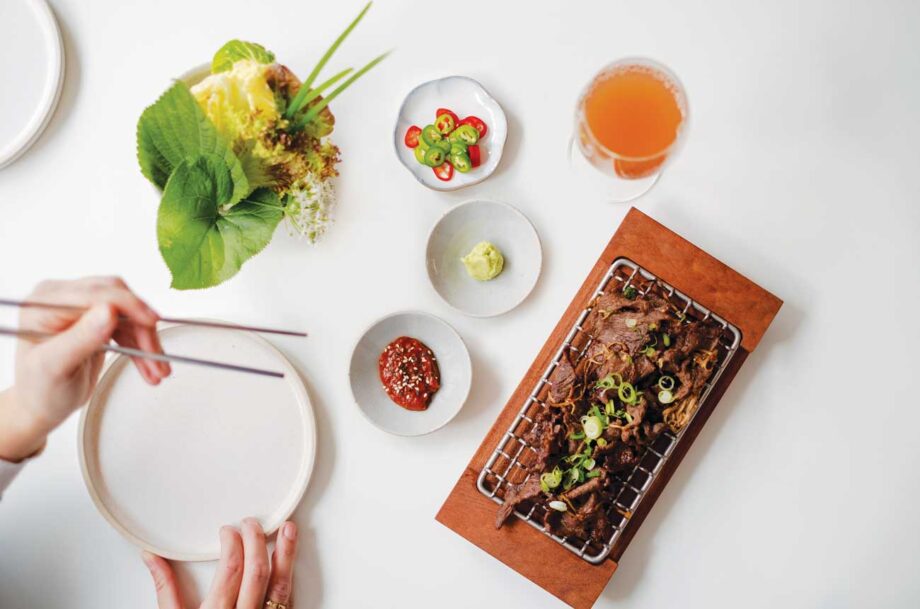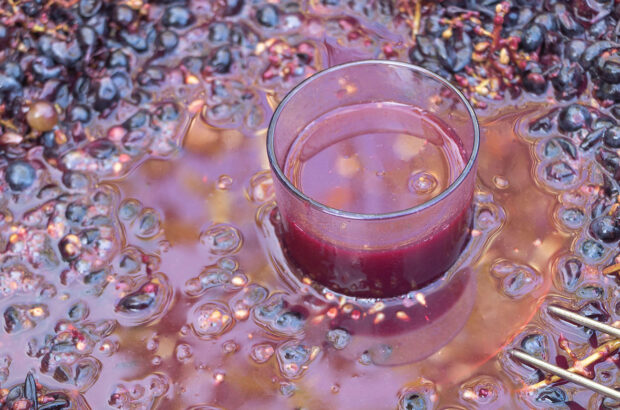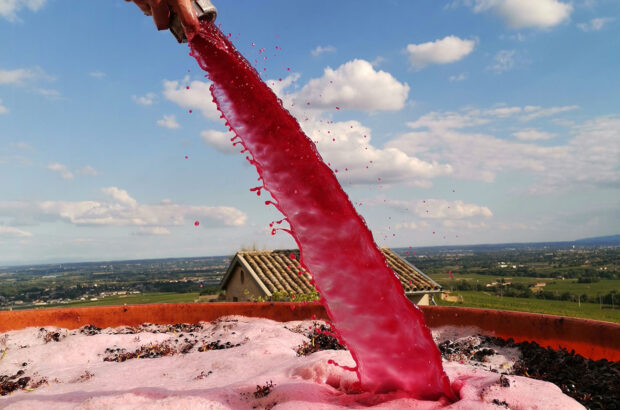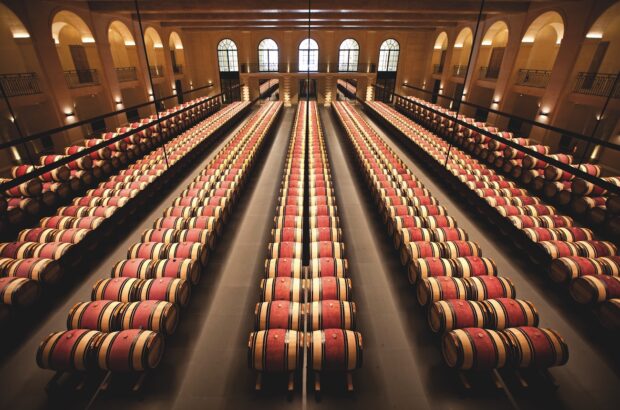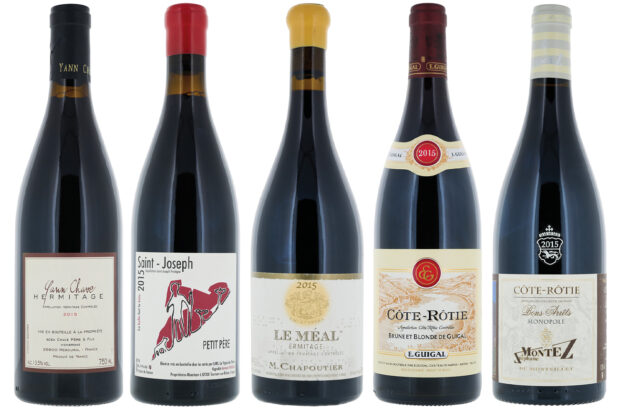The global rise of hallyu – Korea’s cultural wave – has enabled Korean cuisine to step confidently into the spotlight. Following the success of K-pop and K-drama, Korean restaurants are popping up in cities across the world, introducing diners to bold flavours and textures far beyond the now-ubiquitous kimchi.
‘Serendipitously… [this] has coincided somewhat with the huge surge in popularity of “natural” wines,’ says Duncan Robertson, chef-co owner of Korean restaurants Dongnae and Bokman in Bristol. ‘They are perfect bedfellows – the flavours of Korean food being so often formed by indigenous yeasts and wild fermentation.’
For Robertson, everyone ought to know about the beloved ritual of pairing samgyeopsal (grilled pork belly) with refreshing shots of soju, but with high-quality versions of the spirit and other traditional Korean beverages hard to find in the diaspora, wine – and especially natural wine – has become ‘the obvious choice’, he says, over ‘second-rate soju’.
Don’t miss the ultimate wine experience – book your tickets now for the Decanter Fine Wine Encounter London 2025
Pairing potential
Sommeliers previously working in modern European settings have had to adapt. Daniel Jeffs, general manager at modern Korean east London restaurant Calong, found pairing with sesame challenging, for instance. ‘It often overpowers subtle white wines and can create bitter flavours,’ he explains. But once past the initial learning curve, he found the best pairings came naturally: bright, aromatic whites for fish- and vegetable-led dishes, and chilled, fragrant reds for meat and poultry.
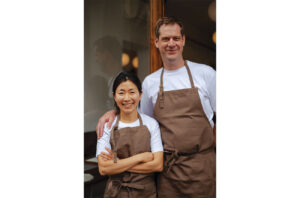
Husband-and-wife team Duncan Robertson and Kyu Jeong Jeon, Dongnae. Credit: Lola Laurent
At Somssi in Mayfair, a Korean fine dining venue at the Mandarin Oriental hotel, led by chef Jihun Kim, sommelier Andres Ituarte starts by asking whether a dish leans towards spicy, sweet, umami or fermented flavours. Spicy dishes are the easiest, with a rich, fruity white such as Viognier, a savoury old-vine Assyrtiko or a restrained New World Syrah softening the heat. For sweeter meat dishes such as bulgogi, he recommends earthy reds with a bit of grip, like Burgundy, Nebbiolo or Rhône blends. For eonyang bulgogi (barbecued beef) wrapped in a shiso leaf with ssamjang (a thick, spicy dipping sauce), you want something juicy, like Bodegas Albamar’s Capitán Xurelo (2022, £30-£31 Cave Bristol, Cork & Cask); Rebecca Lewis, general manager at Dongnae, calls this Galician red blend of native Spanish varieties a ‘magical bottle’ that enhances everything.
Zing is the thing
For umami-led dishes or fermented foods, vibrant wines with good acidity – such as dry Riesling or Barbera – keep things fresh, while Sherries, skin-contact wines and Ituarte’s personal favourite, oxidative Jura whites, stand up beautifully. ‘The richness and nutty character cuts like a knife through the big flavours of kimchi or jangajji [pickled vegetables],’ Ituarte explains. Skin-contact wine, others agree, is a good all-rounder. ‘Some of the less familiar flavour profiles found in skin-contact wines work well with some of the bolder flavours in Korean cooking,’ says Jeffs, citing dishes such as Calong’s take on the classic pajeon (spring onion pancake) and the spicy seafood noodle soup jjamppong.
At Dongnae, Lewis likes to pair vibrant orange wines with dishes such as the lobster naengchae, a summery native lobster and peach salad with a creamy pine nut dressing.
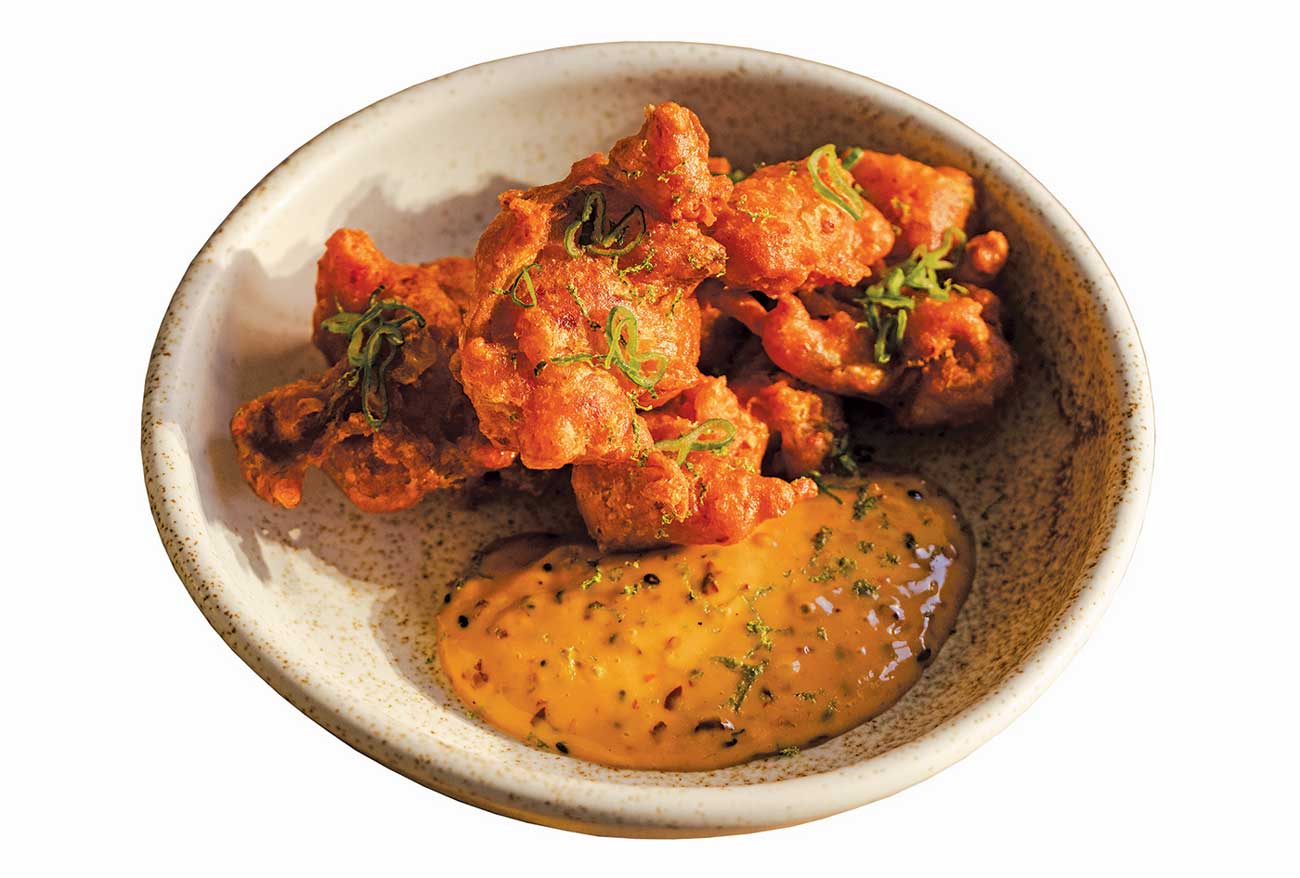
Kimchi fritters from Calong in east London
As Korean food grows in popularity, high-quality Korean spirits and rice wines may come into the mix. In California’s modern Korean restaurants, artisanal makgeoli (a creamy, slightly spritzy rice wine), cheongju (a clear, refined rice wine often compared to sake) and soju already feature on drinks programs, such as at Baroo in Los Angeles, where guests can choose from a wine or Korean sool (alcohol) pairing, including Korean drinks produced in the Golden State.
Jeffs notes how, at Calong, they have already begun tasting artisanal soju and are keen to feature it on their list in the future. But for now, he’s learning – like others – of the joys of pairing Korean food with more familiar tipples. As he explains: ‘One of our snacks from our opening menu, kimchi fritters, is great alongside a glass of crémant or, sometimes, just a nice lager.’
Star pairings to go with Korean food
Korean fried chicken with Champagne
Crisp bubbles cut through the rich, spicy glaze and crunchy textures, amplifying flavour while refreshing the palate. For the ultimate pairing, opt for a fruit-forward blanc de noirs, which brings enough ripeness to match the glaze.
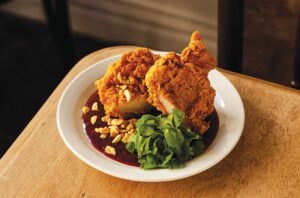
Korean fried chicken
Bulgogi with Nebbiolo
Most Korean meat dishes work well with earthy, light- to medium-bodied reds. For bulgogi, the dish’s sweet, smoky richness finds synergy in Nebbiolo’s bright acidity, forest floor depth and spicy tannins – particularly if it has some age.
Kimchi pancake with Sherry
Oxidative wines are a safe bet with the deep gamchilmat (the Korean word for umami) of many dishes. For kimchijeon (kimchi pancake), fino and amontillado Sherries have enough depth to deal with the tang of classic cabbage kimchi, and enough acidity to offset the fried pancake. Oxidative Jura white or Vin Jaune would also do the trick.

Kimchi pancake


